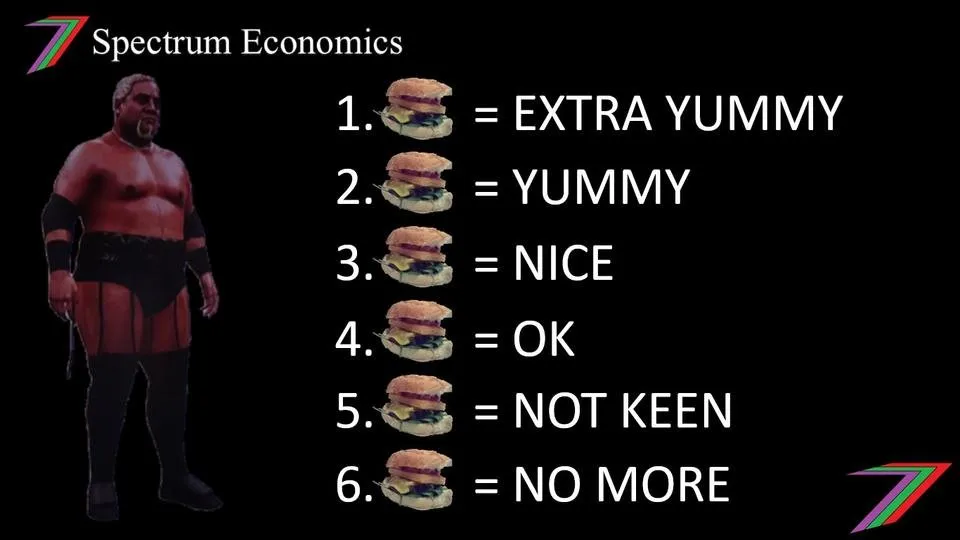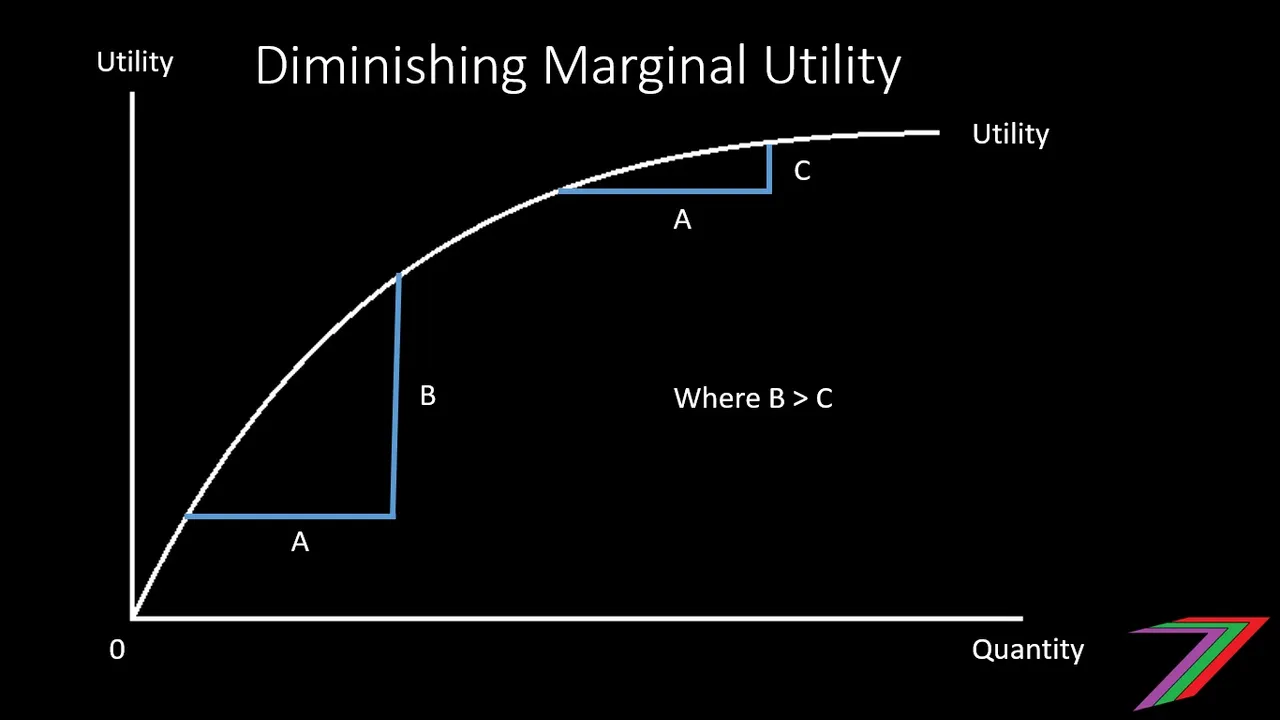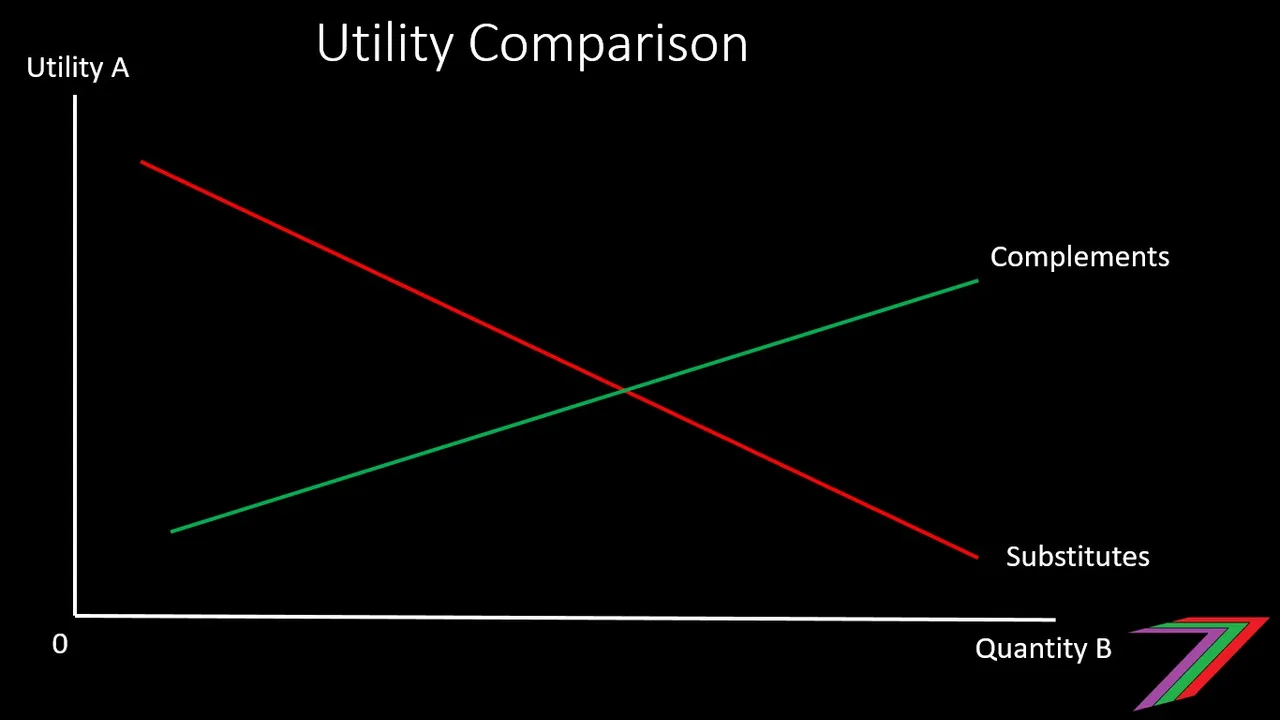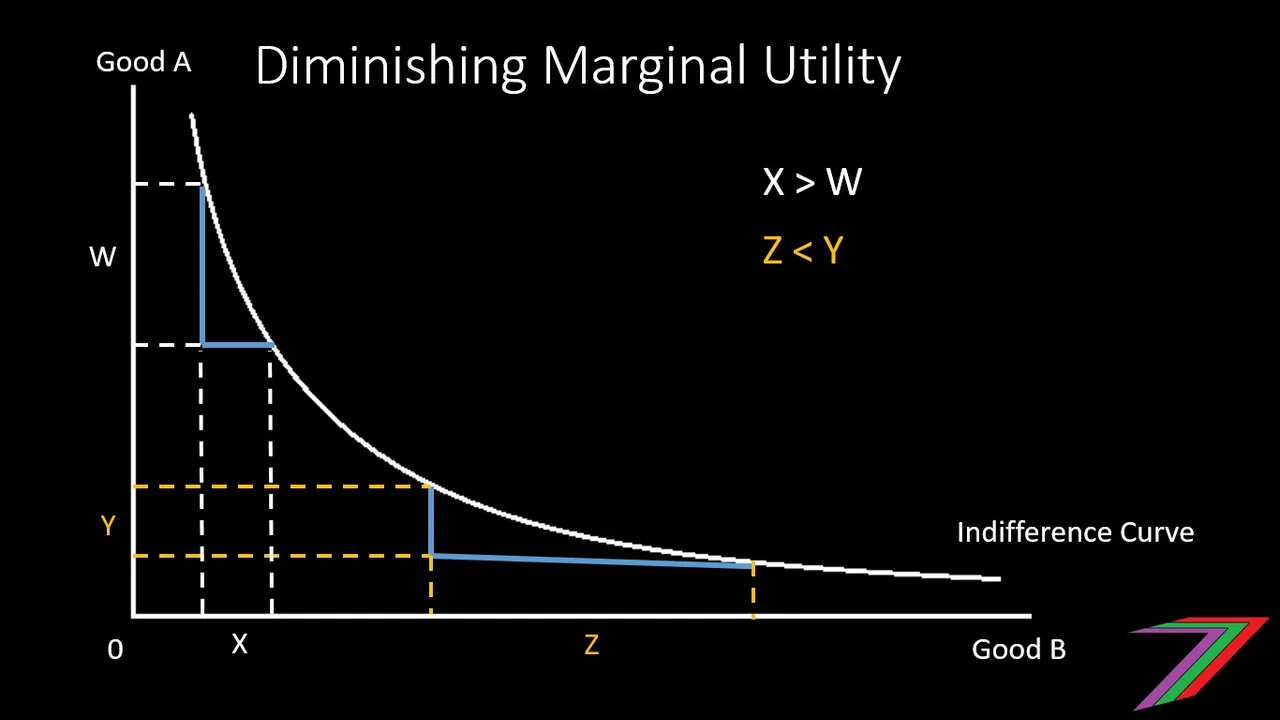Hi Everyone,

In this post, I will revisit utility. I have previously made a written post 'Economic Concepts #1 – Utility’ and a video 'Economics Basics - Utility and Choice’. The post and video provided a broad focus on utility. These posts defined utility and how it can be measured. I would strongly recommend reading the post and watching the video before reading this post. This post focuses on just one aspect of utility and that is marginal utility.
What is marginal utility?
Marginal utility is the additional utility (i.e. satisfaction) obtained from each unit of a good or service consumed.
Diminishing marginal utility

Utility typically increases at a decreasing rate. The first unit consumed provides more utility than the second unit and the second unit provides more utility than the third unit. In some cases, an additional unit may even provide negative utility, which means your total utility starts to fall with each additional unit consumed. A good example of this is food. At the beginning of your first meal, you will feel satisfied by eating more. Halfway through your second meal, you may feel bloated and each additional mouthful makes you feel more dissatisfied
Substitutes and complements
Utility and marginal utility is effected by the consumption of other goods and services. A good or service that serves as an alternative good or service is considered a substitute. For example, a hot dog could be considered a substitute to a burger. A person is likely to choose either a hot dog or a burger. The hot dog satisfies a person’s hunger in a similar way to a burger.
A good or service that adds value and accompanies a good or service is considered a complement. For example, a soft drink could be considered complementary to a burger. A burger could make a person thirsty and the soft drink helps quench that thirst, thus making the whole eating experience better. In my post, 'Economic Concepts - Complements and Substitutes Explained’, I describe substitutes and complements in more detail. I recommend that you read this post to gain a better understanding of complements and substitutes.
As described at the beginning of this post, the more something is consumed the less utility each additional unit provides. This relationship changes when substitutes and complements are also consumed. When a substitute is also consumed, marginal utility falls faster. For example, if someone eats a hot dog and then a burger and then another hot dog. The utility obtained from the second hot dog would be lower than if the burger was not consumed prior. The utility obtained from the first burger would have been lower than if the hot dog had not been eaten prior.
When a complement is also consumed, utility and marginal utility may increase. For example, if someone consumed a packet of chips (i.e. French fries) with two small packets of sauce, the second packet of sauce would provide more utility than if one packet of sauce was consumed by itself.
Figure 1 shows the relationship between utility of one good when the quantity of another good is consumed.
Figure 1: Utility of good when complements or substitutes are consumed

Note: Straight lines have been used for simplicity. In reality, the relationship is not likely to be linear.
Indifference curves
Indifference curves are used to map all the combinations of goods that yield the same utility. The curvature of the indifference curve demonstrates marginal utility of each good in respect to each other. Figure 2 contains an example of an indifference curve.
Figure 2: Indifference curve

When there is a high quantity of Good A, a large reduction in Good A and just a small increase in Good B does not low the utility to the person. This is because the additional units of Good A yield very little utility as the person has already obtained a large quantity. As the quantity of Good A falls, a larger quantity of Good B is required to maintain the same level of utility. This demonstrates that both Good A and Good B experience diminishing marginal utility in relation to each other. An array of indifference curves are required to determine the extent of diminishing marginal utility as whole for both goods.
The shape of the indifference curve provides an indication of whether the goods are substitutes or complements. A very sharp curve indicates that the goods are complements. Figure 3 shows indifference curves for goods that are perfect complements.
Figure 3: Goods that are perfect complements

An additional unit of Good A provides zero utility if not accompanied by a unit of Good B. An example of perfect complements are left shoes and right shoes.
An indifference curve that is close to linear indicates the goods are substitutes. There is very little diminishing marginal utility in respect to each other as they are very similar. Figure 4 shows indifference curves for goods that are perfect substitutes.
Figure 4: Goods that are perfect substitutes

The indifference curves are linear, as Good A and Good B are considered identical. For example, holding 10 units of Good A and 0 of Good B is the same as holding 5 units of each. The straight line does indicate that these goods do not experience diminishing marginal utility. These goods do not experience diminishing marginal utility in relation to each other. An example of perfect substitutes would be two identical bowls of rice filled from the same bag of rice to the same level in each bowl.
In both Figures 3 and 4, the indifference curves are distanced further apart. The gaps between the indifference curves are further apart to indicate diminishing marginal utility from consuming both goods together; i.e. more of the two goods need to be consumed to create the same increase in utility. For example, 1 pair of shoes provides ‘X’ level of utility while 10 pairs of shoes only provide ‘4X’ level of utility. I would suspect that the indifference curves for substitutes would diverge sooner than complementary goods as the substitutes are addressing the same needs and wants.
In my post, 'Economic Concepts #7- Indifference Curves’, I provide a more technical explanation of how indifference curves operate and demonstrate utility.
Conclusion

Marginal utility and theories around diminishing marginal utility is one of the most significant developments in economic thought. Independently to each other, three famous economists, Leon Walrus, William Jevons, and Carl Menger, developed the marginal theories.
Understanding marginal utility is important as it explains why people require particular quantities of goods and services to fulfil their needs and wants. It demonstrates the importance of providing something that supports existing products. It also implies the importance of product differentiation to reduce the effect of diminishing marginal utility from close substitutability.
More posts
If you want to read any of my other posts, you can click on the links below. These links will lead you to posts containing my collection of works. These posts will be updated frequently.




Steem - The Future of DApps




